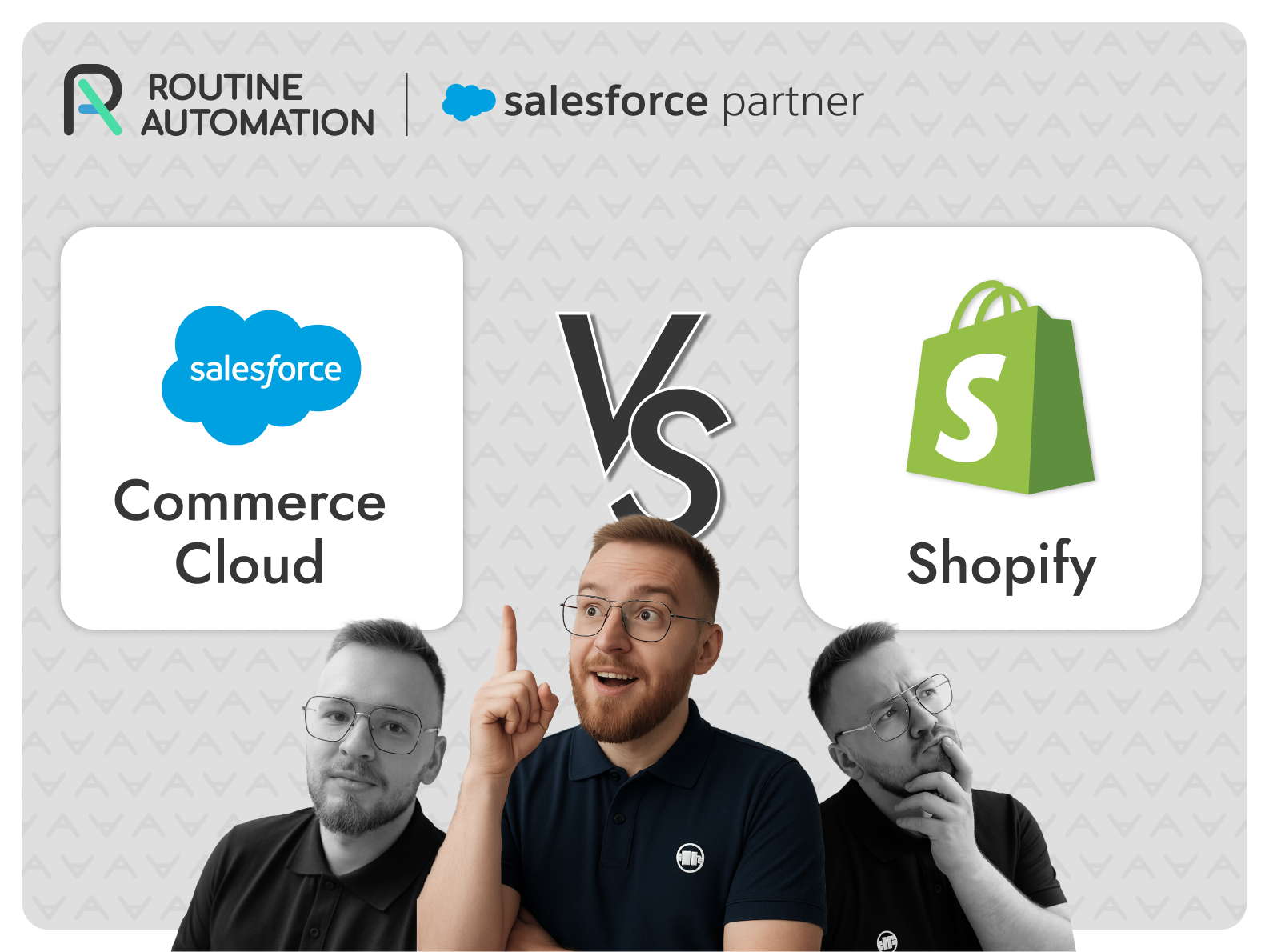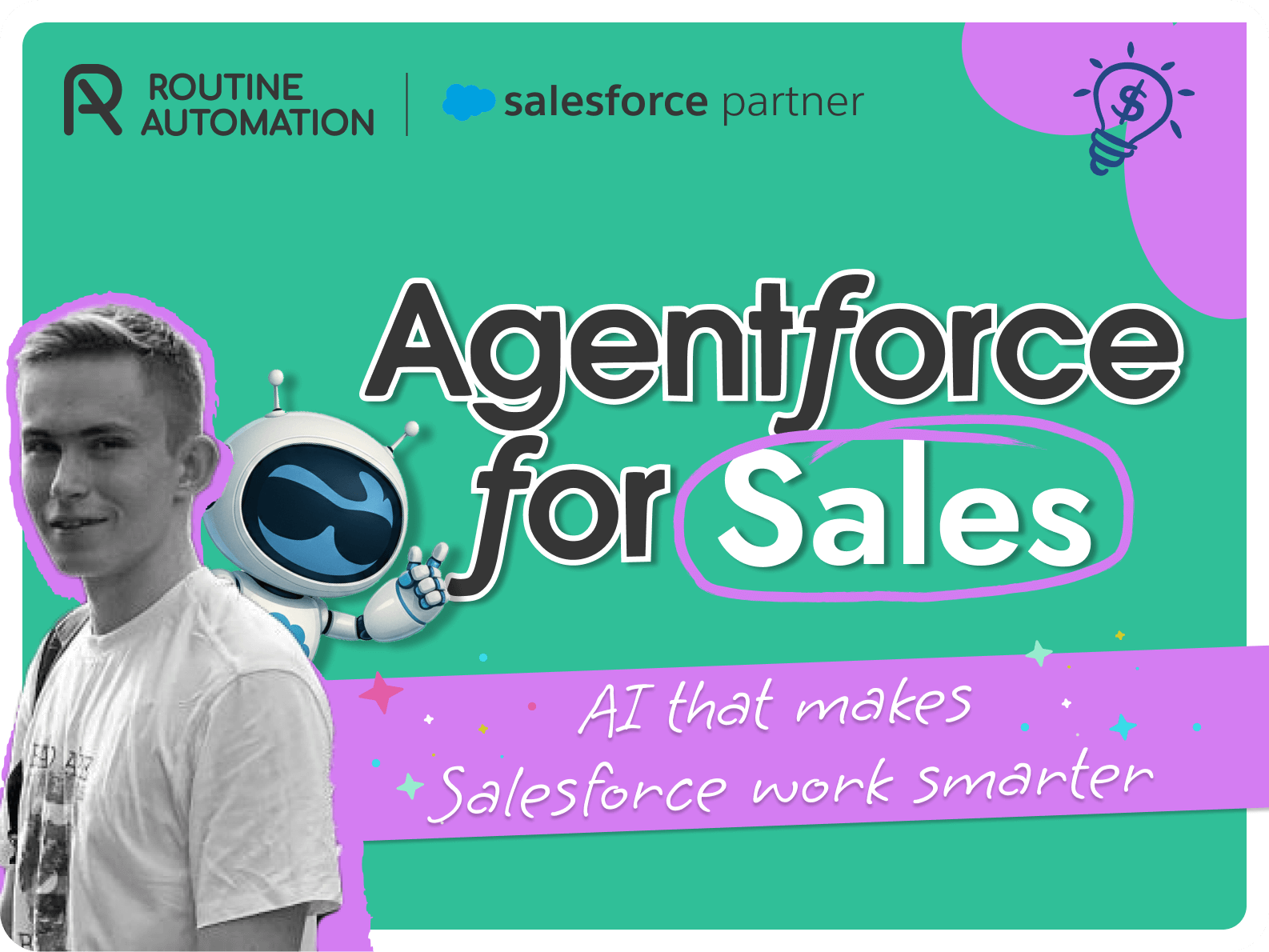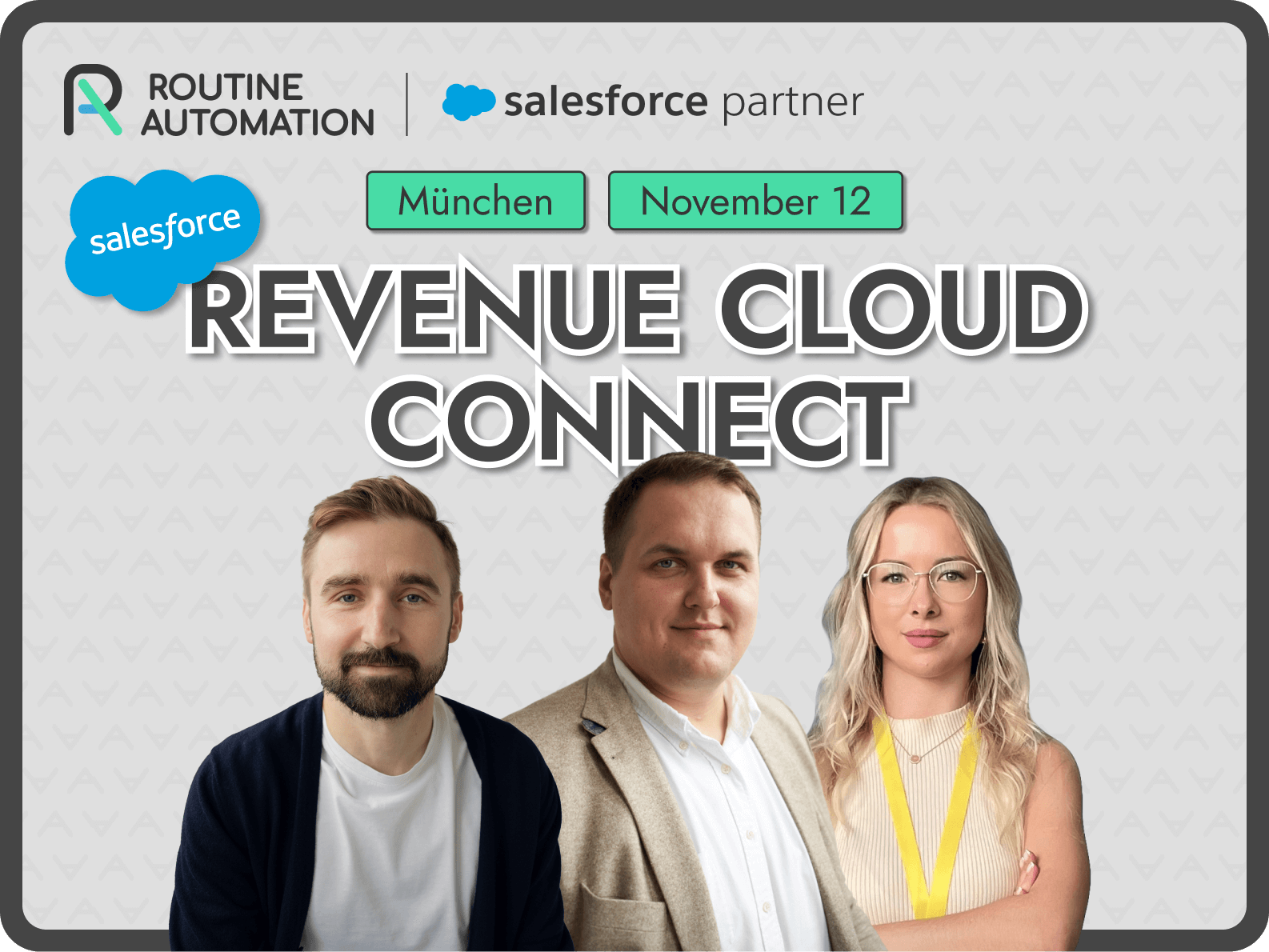Best Practices For Salesforce Integration with Third-Party Applications
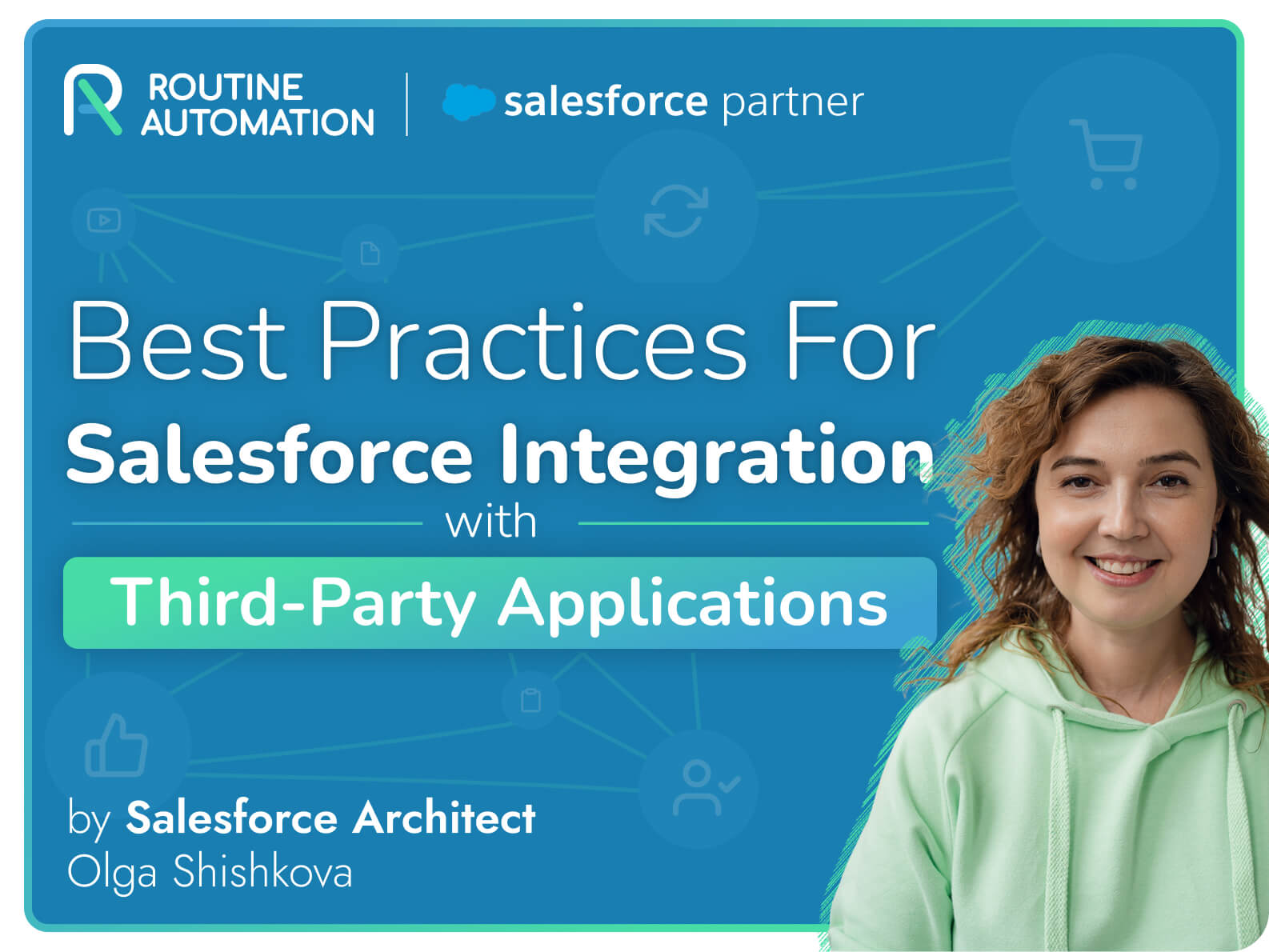
Salesforce is the world’s most popular CRM platform, centralizing customer data to optimize sales, marketing, service, and more. At Routine Automation, we believe integrating Salesforce with other business systems maximizes its value by extending CRM insights across your technology ecosystem.
In this comprehensive guide, Salesforce Architect Olga Shishkova will share best practices and critical factors for successful Salesforce integration with third-party tools and external systems. Read on to enhance your use of Salesforce through strategic integration.
Salesforce Third-Party Integration: An Overview
Salesforce third-party integration refers to connecting your Salesforce deployment with external applications beyond the platform’s native capabilities. This allows sharing of data and workflows between Salesforce and tools like:
Integrating third-party apps with Salesforce breaks down data silos, enhances collaboration across teams, and centralizes information to improve decision-making. It also allows you to leverage specialized functionality offered by external tools directly alongside your CRM.
But while the benefits are substantial, successful integration requires following key steps and best practices covered in this guide.
Partnering with our integration experts helps companies implement reliable, scalable connections between Salesforce and third-party systems essential for your business.

Guide to Salesforce Integration
Integrating Salesforce with other applications involves multiple technical and strategic factors:
1. Choosing an Integration Approach
There are two primary integration approaches:
App-based integration is lower-code and faster, while code-based allows advanced customization.
2. Selecting an Integration Tool
If taking an app-based approach, evaluating integration tools is key. Some factors to analyze:

Leading tools include Boomi, Workato, Zapier, and Informatica. Again, Routine Automation consulting experts can help select the ideal platform.
3. Planning the Integration Architecture
Next, the technical architecture for the integration must be mapped out including:
Answering these questions will frame the integration build.
4. Configuring Connections and Mappings
The integration tool will connect to Salesforce using APIs and authentication. Connections to target apps must also be configured.
With connections in place, data fields must be mapped between Salesforce and external objects. This mapping ensures data aligns correctly on syncing.
5. Building Automation and Workflows
Workflows and logic can be built to automatically trigger syncs based on events, schedule batches, or filter data. This automation prevents manual intervention once integrated.
6. Testing and Deploying
Rigorously testing synchronized data and scenarios is critical before full rollout. Monitoring tools and logs help identify and resolve any points of failure.
7. Maintaining Integrations
Like any technology, the integration must be continually maintained, enhanced, and adapted to any changes in connected systems. This sustains seamless data flows.
By following this technical process with care and rigor, Salesforce can integrate reliably with any external system needed by your business.
Our technical team can help at every stage, from planning integrations to configuring tools to ongoing management, ensuring your Salesforce integration initiatives succeed.
Salesforce Third-Party Integration: Examples and Use Cases
Some examples of impactful Salesforce third-party integrations include:
1. Salesforce Integration with Third-Party System for Mortgage Lending
For a UK-based financial services organization, Routine Automation enhanced its mortgage lending process by integrating Salesforce with a third-party system. Key aspects include:
2. Pardot Integration for Enhanced Social Media and Web Analytics
A global computer software provider based in Germany leveraged Pardot integration for advanced social media campaign management and web analytics. Key implementations include:
Results:
3. Salesforce B2C Commerce Cloud & SAP Integration for Retail Giant
A leading international retailer with UK headquarters revolutionized their online and offline store operations by integrating Salesforce B2C Commerce Cloud with SAP. This strategic move transitioned them away from an outdated legacy system.
Key Implementations:
Results:
These are just some examples of high-value Salesforce application integrations by the Routine Automation team. The possibilities are endless for connecting Salesforce across your unique technology landscape.
Our consultants can identify high-value use cases where integrating Salesforce with marketing, ERP or other systems would maximize your technology ROI.
Salesforce Third-Party Integration: Best Practices
Follow these best practices when planning and implementing Salesforce third-party integrations:

By following integration best practices, you can maximize the value of Salesforce and additional apps important to your business in a unified technology ecosystem.
Collaborating with our integration specialists, organizations can adopt proven methods to integrate Salesforce safely, efficiently, and strategically.
Apps and Systems that Can Integrate with Salesforce
In addition to major hubs like marketing automation, ERP, or help desk software, Salesforce can integrate with countless other apps including:
And countless others offering important digital capabilities. Routine Automation integration experts can help identify high-value connections to amplify your Salesforce ROI and improve workflows and analytics.
Salesforce Integration: Types and Patterns
There are some core integration types and patterns commonly used with Salesforce:
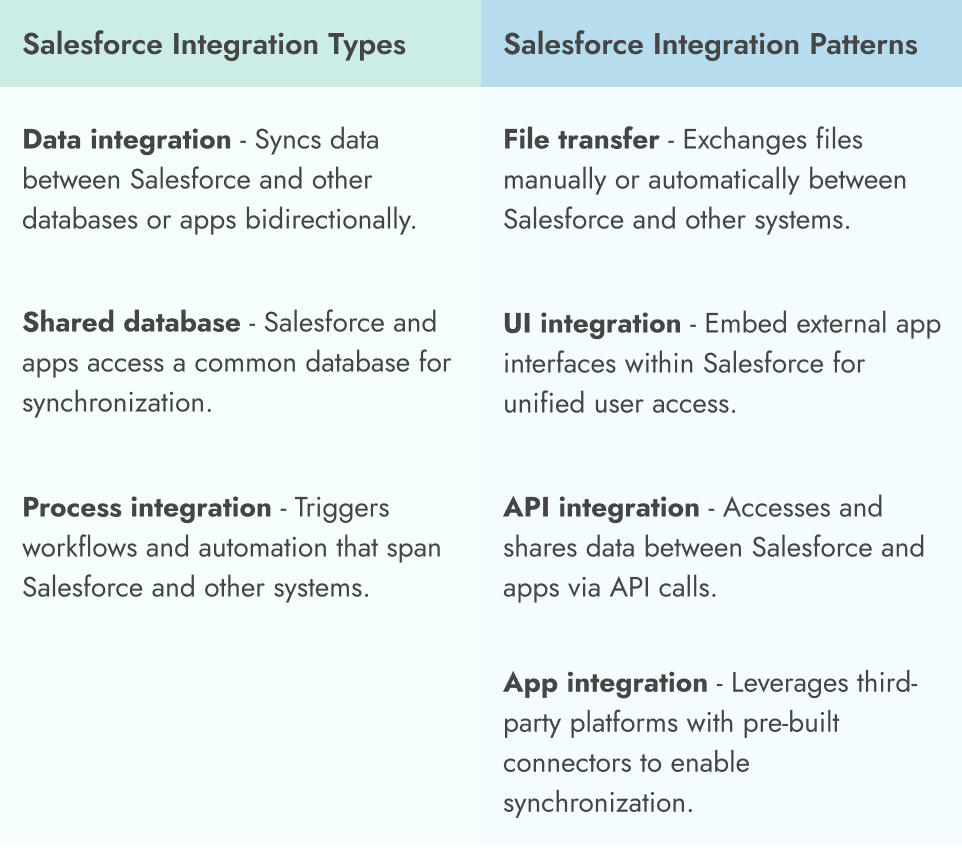
Understanding these core integration styles and patterns helps inform the selection of the optimal approaches for your technology environment.
Our team keeps current on all the latest integration styles and patterns to provide recommendations on optimal approaches for your goals and environment.
Benefits of Integrating Salesforce with Third-Party Apps
Some major benefits provided by Salesforce third-party integration include:
The right integrations transform Salesforce from a standalone CRM into a connected hub at the center of your technology ecosystem. Partnering with us enables realizing the full benefits of Salesforce integration faster, without the pitfalls that can thwart success.
Integrate Salesforce Flawlessly with Our Experts
Our technical experts can guide you through planning, architecting, and implementing seamless third-party integrations with your Salesforce environment.
We start by thoroughly understanding your business goals, workflows, and pain points to identify high-value integration opportunities. Then our team assesses your ecosystem and recommends optimal integration tools and approaches based on your needs and technical landscape.
Leveraging leading platforms, our skilled developers can rapidly build, test, and deploy bi-directional syncing between Salesforce and essential marketing, ERP, e-commerce, or other systems using a combination of pre-built connectors, custom coding, and automation. We handle all API configuration, field mapping, duplicate reconciliation, and error handling to ensure fully smooth data synchronization.
Our team follows agile methods to deliver integrations iteratively, starting with high-impact use cases and expanding over time. We also partner long-term to actively maintain and enhance your Salesforce integrations as your needs change. With our guidance, companies can effectively integrate Salesforce with the critical applications that drive key workflows, unlock analytics, and ultimately boost business performance.
Conclusion
Integrating third-party applications with Salesforce via modern integration platforms unlocks game-changing value for businesses. Following best practices for planning, architecting, and implementing bi-directional data flows and automation between Salesforce and external systems enables you to maximize ROI across your technology investments.
By taking an iterative, use case-driven approach, any business can enhance processes, collaboration, analytics, and productivity through Salesforce integration. Partnering with specialists accelerates safe, reliable integrations that adapt as your needs evolve.
At Routine Automation, experts provide strategic guidance and implementation services enabling Salesforce to integrate seamlessly with the applications central to your business success.
Let our technical team provide guidance on planning and implementing scalable, reliable Salesforce integrations that adapt to your changing needs and empower your business.





